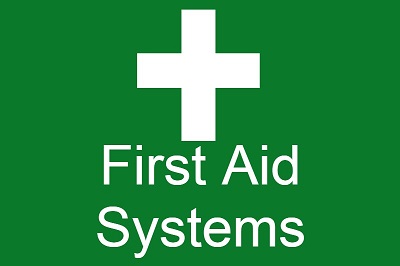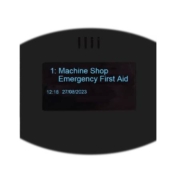Enhancing First Aid Response
Enhancing First Aid Response: The Role of Paging Systems for First Aid Responders
In times of crisis, when there is a workplace incident, swift and efficient communication is paramount. First aid staff play a crucial role in providing immediate assistance and support to those in need. However, coordinating their efforts and ensuring they reach the right location in a timely manner can be challenging, especially in large or complex environments. This is where paging systems step in as invaluable tools for optimising first aid response.
The Need for Effective Communication in First Aid Response
When an emergency occurs, every second counts. Effective communication is the lifeline that ensures swift and coordinated response efforts. Traditional methods such as verbal announcements or manual calls may be insufficient in environments with high ambient noise levels, limited visibility, or large buildings. In such situations, paging systems offer a reliable means of transmitting critical information to first aid staff, regardless of the surrounding conditions.
How Paging Systems Facilitate First Aid Response
Instantaneous Alerts
Paging systems allow for the instantaneous dissemination of alerts and messages to designated recipients. Whether it’s a medical emergency school or incident in a large industrial facility, first aid personnel can be promptly notified, reducing response times and potentially saving lives.
Targeted Messaging
With paging systems, messages can be targeted to specific individuals, groups, or zones within a facility. This ensures that only relevant personnel receive the information they need, minimizing confusion and optimizing resource allocation. For example, in an industrial building spread over a large site getting the right message to the right responders is critical, and paging systems can facilitate tailored alerts accordingly.
Reliable Coverage
One of the key advantages of paging systems is their reliable coverage even in areas where cellular or Wi-Fi signals may be weak or unavailable. This resilience makes paging systems well-suited for use in diverse environments, including schools & colleges, factories & offices, and buildings with thick walls or structures that can interfere with wireless connectivity.
Real-World Applications
Industrial Environments
In industrial settings, where workplace accidents or hazardous incidents can occur, paging systems help coordinate first aid response efforts among onsite medical personnel, safety teams, and emergency responders. Integration with alarm systems and sensors enables automatic alerts in the event of fire, chemical spills, or other emergencies, ensuring a swift and coordinated response.
Schools & Colleges & Offices
Large-scale locations, such as schools, colleges and offices rely on paging systems to communicate critical information to first aid staff dispersed throughout the facility. In the event of medical emergencies, accidents, or security threats, paging systems enable rapid mobilisation of first responders to the affected areas, minimising disruptions and ensuring the safety of staff.
Conclusion
In the realm of first aid response, effective communication is paramount. Paging systems serve as indispensable tools for facilitating rapid and coordinated response efforts, ensuring that first aid staff are promptly alerted and directed to where their assistance is needed most. Whether in offices, industrial settings, or schools & colleges, the integration of paging systems enhances the efficiency, reliability, and overall effectiveness of first aid response operations, ultimately saving lives and mitigating the impact of emergencies.
First Aid Responder Systems from Pager Call Systems
Pager Call Systems offers a sophisticated range of paging systems for first aid responders, systems can be as simple as a stand alone paging system to alert responders of an incident or more complex systems with desktop PC messaging, First Aid Call Points & networked based calling for large buildings.
See more on First Aid Paging Systems








